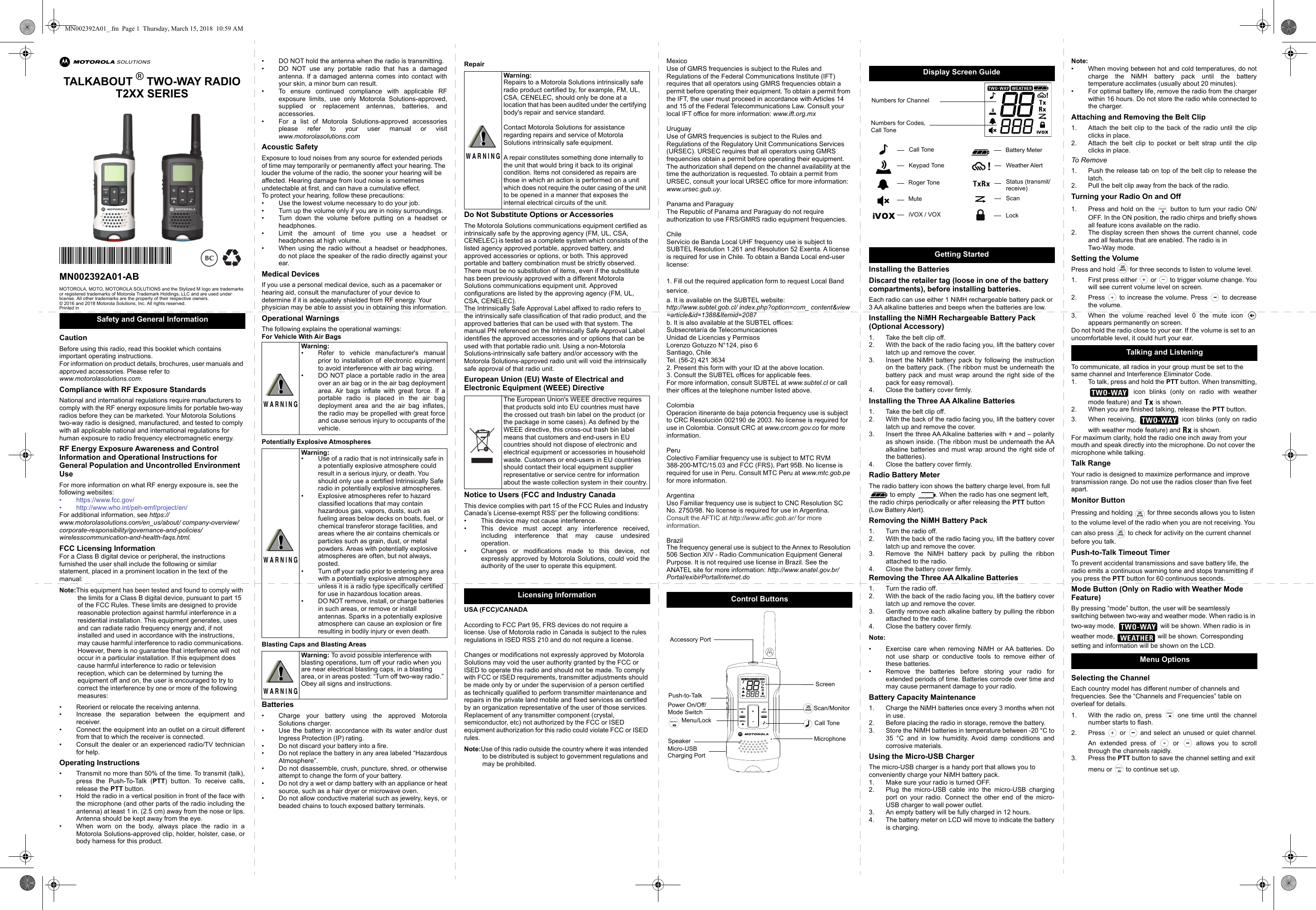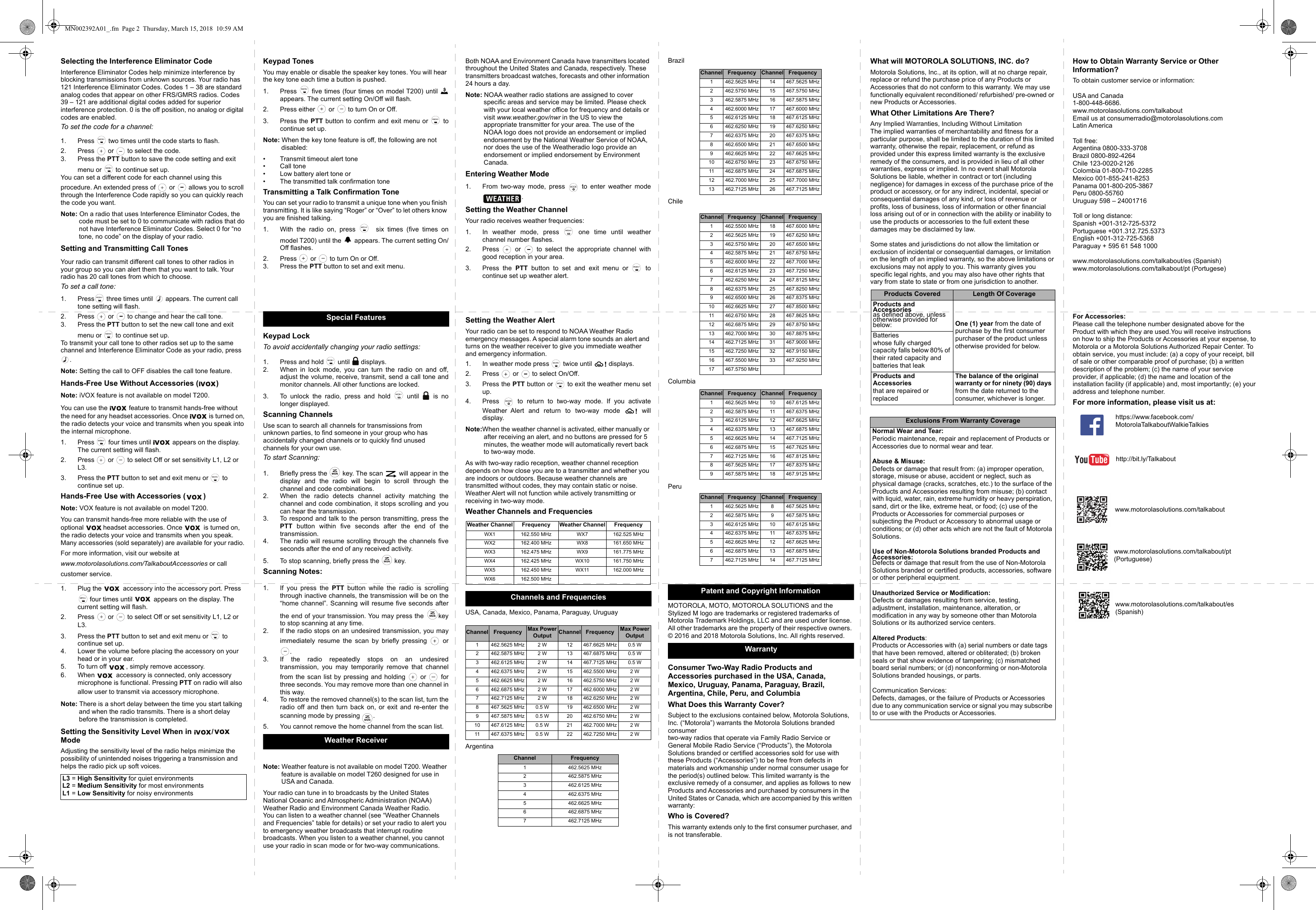Motorola Solutions 89FT4929 2-Way Portable Radio with FRS and Weather Band receiver User Manual TALKABOUT TWO WAY RADIO T2XX SERIES
Motorola Solutions, Inc. 2-Way Portable Radio with FRS and Weather Band receiver TALKABOUT TWO WAY RADIO T2XX SERIES
Contents
- 1. Users Manual
- 2. Manual
Manual

